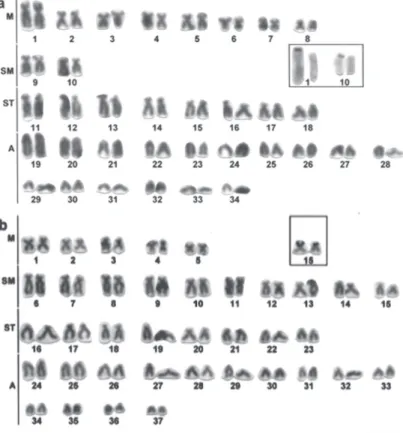Karyotypic diversity and evolutionary trends in the Neotropical catfish genus Hypostomus Lacépède, 1803 (Teleostei, Siluriformes, Loricariidae)
Texto
Imagem




Documentos relacionados
In this study, random amplified polymorphic DNA (RAPD) markers were applied to analyze the genetic diversity of samples of the Neotropical catfish Hypostomus ancistroides,
Physical Mapping of the 5S and 18S rDNA in ten species of Hypostomus Lacépède 1803 (Siluriformes: Loricariidae): evolutionary tendencies in the genus.. Loricariidae) inferred
Hypostomus faveolus is distinguished from its congeners by the unique combination of pale blotches over a darker background in body and fins ( vs. dark blotches over paler
Hypostomus denticulatus is morphologically very similar to H. multidens Jerep, Shibatta & Zawadzki, sharing with these species characters such as a wide jaw, deep caudal
The new species is known from its type locality, the rio Perdido, tributary to the rio Apa, rio Paraguai basin, Mato Grosso do Sul State, Brazil (Fig.. Naked areas reduced
The catfish Hypostomus regani (Ihering, 1905) is one of the most widespread species of the genus, ranging from the headwaters of the upper Paraná River basin in the Brazilian state
In this procedure, the progenies are evaluated based on the total harvest of plots, and the numbers of families that are above the experimental mean and the estimated numbers
In Akodon the diploid chromosome number ranges from 2n = 9 or 10 to 2n = 52, with the majority of the mem- bers of this genus being characterized by relatively low chromosome
